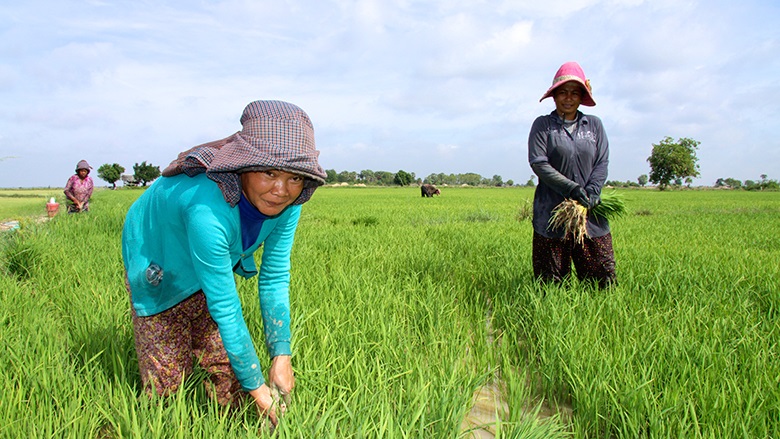The Role of Agriculture in Cambodia’s GDP
Why Farming Still Fuels the Kingdom’s Economic Engine
Agriculture has long been the backbone of Cambodia’s economy, playing a pivotal role in employment, food security, and rural development. Even as Cambodia diversifies into sectors like tourism, manufacturing, and digital services, agriculture continues to contribute significantly to the nation’s Gross Domestic Product (GDP).
This article explores the importance of Cambodia’s agricultural sector, its evolving role in the national economy, and how agents and local partners—like those at Cambodia-Agent.com—help domestic and international stakeholders tap into its full potential.
Agriculture’s Contribution to GDP: A Vital Economic Pillar
According to the World Bank, agriculture contributed approximately 22–24% of Cambodia’s GDP in recent years. Though this share has slightly declined due to growth in other sectors, it remains a cornerstone of the Cambodian economy, particularly in rural areas.
Key stats:
-
Over 3 million hectares of land are used for agriculture.
-
Agriculture employs around 31% of the national labor force.
-
The sector includes rice cultivation, rubber, cassava, maize, livestock, and fisheries.
🔗 Explore: Exploring Cambodia’s Agricultural Export Potential
Rice: The Heart of Cambodian Agriculture
Rice is Cambodia’s most important crop and a cultural staple. The country is known for its fragrant, high-quality jasmine rice, which has gained traction in export markets such as China, the EU, and ASEAN countries.
-
Cambodia exports over 600,000 tons of rice annually, according to the Cambodia Rice Federation.
-
Export value from rice is in the hundreds of millions of USD each year.
-
Major rice-growing provinces include Battambang, Kampong Thom, and Prey Veng.
Export Development
With rising global demand for organic and sustainable rice, the government—alongside partners and agents—is working on:
-
Expanding rice mill capacity
-
Boosting organic certifications
-
Enhancing irrigation and climate resilience
🌾 Read more: Green Logistics in Cambodia: Trends and Technology
Diversification: Rubber, Cassava, and Fisheries
While rice is dominant, Cambodia’s agricultural economy is diversifying:
Rubber
-
Over 400,000 hectares are planted with rubber trees.
-
Cambodia exported roughly 370,000 tons of rubber in 2023.
Cassava
-
Cambodia is among the region’s largest cassava producers.
-
Key exports go to Thailand, Vietnam, and China, either as chips, pellets, or flour.
Fisheries
-
The Tonlé Sap Lake provides a significant portion of inland freshwater fish.
-
Fish accounts for over 60% of the country’s protein intake.
-
Aquaculture is growing rapidly as demand rises.
🐟 Also check: Cambodia’s Export Sectors: Opportunities for Global Buyers
Rural Livelihoods and Socioeconomic Development
Agriculture is critical for poverty reduction and food security, especially in rural areas. The sector supports:
-
Smallholder farmers and family-run farms
-
Women’s participation in agribusiness
-
Rural infrastructure through public-private investments
Despite challenges such as climate change and limited mechanization, the government continues to invest in:
-
Irrigation systems
-
Climate-resilient farming
-
Financial inclusion for farmers
Technology and Modernization in Agriculture
The Cambodian government’s Rectangular Strategy IV emphasizes the modernization of agriculture through:
-
Smart irrigation
-
Agricultural mechanization
-
Digital platforms for market access
Partnerships with private sector actors and agricultural agents are key to bringing innovation to rural regions.
🚜 Related: How Technology and AI Are Changing Logistics in Cambodia
The Role of Agents in Agriculture and Agribusiness
Agents and sourcing specialists help both local producers and international buyers navigate Cambodia’s complex agricultural ecosystem. Their services include:
-
Connecting exporters with international buyers
-
Assisting with quality control, certifications, and documentation
-
Coordinating transportation and customs clearance
-
Helping foreign investors identify viable agribusiness projects
For global traders and agricultural investors, platforms like Cambodia-Agent.com provide reliable access to:
-
Rice millers and exporters
-
Cassava and rubber suppliers
-
Cold chain logistics and warehousing solutions
Challenges and Opportunities
Despite its strengths, Cambodia’s agriculture sector faces several hurdles:
-
Climate risks and water scarcity
-
Limited access to modern tools and technology
-
Inefficient supply chains
However, these challenges also open up opportunities for investment and innovation, including:
-
Green farming practices
-
Export diversification
-
Agri-fintech and smart farming tools
Conclusion: Agriculture Is a Key to Inclusive Growth
Even as Cambodia’s economy evolves, agriculture will remain a foundational contributor to GDP and rural livelihoods. For SMEs, large-scale buyers, and foreign investors, understanding Cambodia’s agricultural landscape—and partnering with local agents—is essential to making informed, impactful decisions.
Whether you’re sourcing organic jasmine rice, investing in agri-logistics, or exploring land for plantation projects, working with experts like Cambodia-Agent.com ensures your venture is rooted in local knowledge, reliability, and long-term value.
